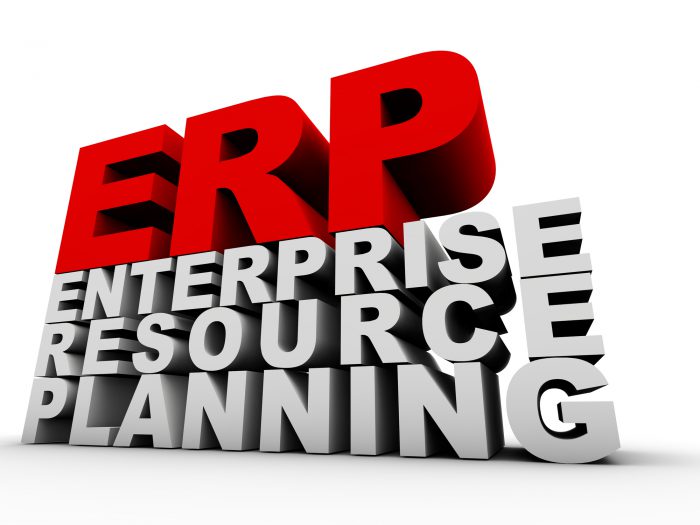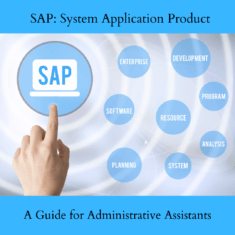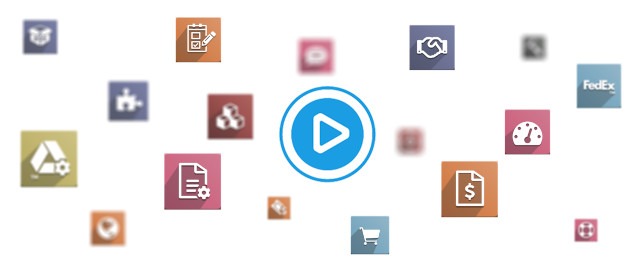In the late eighties, many companies moved toward purchasing packaged software instead of developing their own information systems. The trend increased in the nineties as we approached the turn of the century. The standard systems were composed of autonomous “IT islands”, each of which supported a specific functional area.
Since then the business environment has dramatically changed. Companies today face the challenge of increasing competition, expanding markets and rising customer expectation.
For this reason, big software producers, such as SAP, Oracle, Microsoft and Infor Global Solutions, have developed more and more sophisticated information systems capable of integrating the multiple business applications of a company, regardless of geographical location, in a single database.
Standard systems have evolved into what today is known as an “ERP” or Enterprise Resource Planning system. Essentially, an ERP is a business management software that helps to coordinate and manage all business activities in one central location, making the information available at all levels of the organization.
 The key reasons to deploy an ERP system are:
The key reasons to deploy an ERP system are:
- The company becomes increasingly complex.
- Inadequacy of the installed business system. Various front- and back-end systems run separately with no integration.
- Inaccuracy of the data.
- Lack of measurable and clearly identifiable data.
An ERP can help to solve multi-platform IT issues and improve performance with the availability of information with a real-time mode and faster response time. Furthermore, ERPs increase the interaction between internal employees and external organizations, and can streamline workflow.
ERP systems are customized by consultants according to the client’s requirements. Highly recommended for both big and small businesses, also ERPs allow small companies to appear, act and operate like a large-scale enterprise. SAP SE is an example of multinational software house which develop ERP software using its own language ABAP. They produce solutions for big, small and midsize companies such as SAP ERP, SAP Business One and SAP S/4HANA. A SAP system comprises a number of fully integrated modules which cover every aspect of the business management.
Implementation
The ERP consultant has a crucial role in the implementation process. He or she proposes the appropriate ERP software solution after a full evaluation of the client’s needs, and successfully deploys it.
Some companies may be reluctant to want to install an ERP, since the implementation requires not only a substantial budget, but also a considerable effort in terms of resources-human and otherwise. Implementing an ERP involves a major initial impact on:
- Time - the amount of time it takes to implement, and the time spent on the process by staff.
- Procedures and processes - many will change, and personnel will have to get used to a completely new system.
- Human resources - employees will often need to spend several hours familiarizing themselves with the new system, whether or not they are involved in the implementation process.
Effective project management is also a key to successful implementation. Product managers must define clear project objectives, develop a work and resource plan, and carefully track the project’s progress.
There is no standard timeframe for an ERP project implementation. It varies depending on several circumstances. However, generally, implementing an ERP project takes several months. It greatly depends on the size of the company, the complexity of the system being installed, and the transfer or integration of data from legacy systems. However, it is very important to try to accurately estimate the project completion time and avoid extending the allotted time period.
Keys of effective implementation
An ERP implementation affects the entire organization, including processes, people and culture. For an ERP to be correctly implemented, the business implications and requirements need to be clear, and top management support plays a fundamental role in the project.
For successful implementation, it is most important to review the existing business processes and procedures, and to develop new ones based on the new system.
Training employees, as part of the ERP implementation process, will help them take full advantage of the system’s benefits. By using the system effectively, employees improve their performance.
Strategy
An ERP implementation strategy generally has two different solutions, keeping in mind that it mostly affects only some of the functions involved in a company.
The first solution, which we can call a “big bang”, means implementation of all functions in a single moment. The total transition from the old management system to the new ERP system is a drastic change. In some instances, it could lead to an operational crisis situation.
However, it has the advantage of often being faster than the other solution.
The second solution implies implementing the functions at different moments in order to have a different date of entry for each of them. This approach is softer than the previous solution. The way users are used to working is not as disrupted, and it gives them more time to adapt to changes.
What is the future of ERP systems?
Strangely enough, we are beginning to perceive an important relationship between ERPs and the Internet of Things (IoT), a market that is growing rapidly. IoT is a family of technologies designed to make any common object a device linked to the internet, acquiring intelligence, losing a passive role and gaining an active role in our lives. The object is able to have some features of a smart device (like a smartphone) monitor and control information and carry out subsequent actions. For example, a street lamp can detect if its bulbs are working or not, but it might also analyze the level of air pollution. The object becomes “smart” by simply adding a chip. The information is managed by a software program (middleware) which is integrated within a management system, ERP included.
The IoT strengthens ERPs because of its ability to assist with data gathering. Currently, 90% of data entries for an ERP solution are processed by operators and issued by a relatively small number of terminals. With the use of IoT by the organizations, especially in manufacturing, transportation and logistics, the volume of data generated by sensors (things) will reach half the total amount of data entries. To maximize the potential gains from this huge mass of data, ERP systems must be more and more flexible and intelligent.
Implementing change is never painless. However, it can be less painful when it is done after analysis, planning and strategizing. If your company has decided to install an ERP, as a user, try to understand what the system is and give a full commitment to it. If you do, chances are, you will help the company to make the most of this useful tool.
© Mnovelo | Dreamstime.com - ERP Enterprise Resource Planning Photo


 The key reasons to deploy an ERP system are:
The key reasons to deploy an ERP system are:

